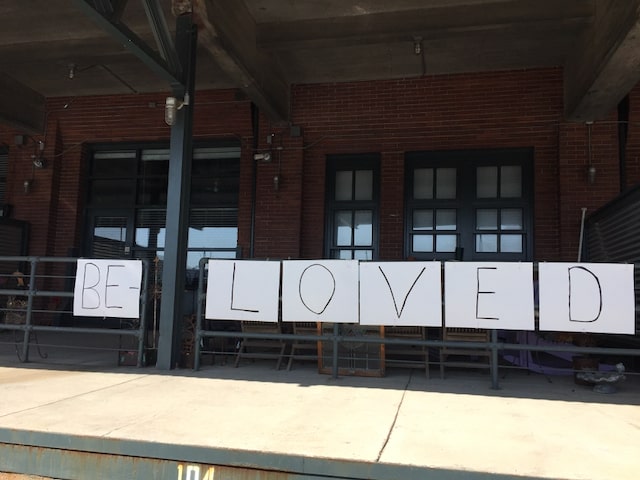
Violent or Peaceful?
My last year at the University of Virginia, I took a masters-level Applied Sociology class. There I learned that small changes in our public spaces—placement of the exit on the bus, arrangement of an apartment complex courtyard—can lead to huge changes in group behavior. Ever since, I’ve been fascinated by forces that influence us in ways of which we are unaware.
Hence, my amateur neuropsychology expertise (for newcomers to the blog, that’s a joke). Today, I want to pass along an infinity loop we need to be aware of. The subject I’ll use for example: protests.
If you watch Fox News coverage of the Black Lives Matter protests, you’re going to see photos of violent rioters. In contrast, if you watch CNN coverage, you’re going to see photos of peaceful protestors. Even in the “objective” media, you’re more likely to see violence at protest. Violence leads to clicks. Not so much the storyline, “Here’s some footage of people walking.”
Furthermore, if you believe protests are dangerous outbursts that threaten the safety of ordinary citizens (perhaps influenced by Fox News), your brain will register images of violent rioters and filter out peaceful protestors. On the other hand, if you believe protestors are brave 1st Amendment heirs of Dr. Martin Luther King, Jr., (perhaps influenced by CNN), your brain will filter out images of windows being smashed.
To know realistically how violent or peaceful protests are, you have to look at a compiled analysis of many protests. This will tell you that of the 10,600 protests across the country from May 26 (the day after George Floyd’s death) to August 22, 10,100 or 95% of the protests were peaceful. Five hundred and seventy or 5% involved demonstrators engaging in violence.
Here’s the kicker.
If you’ve been watching and noting images of violent protests, you aren’t going to believe that statistic. And if you’ve been watching and supporting peaceful protests, you’re likely to discount even the violent 5% as the fault of rightwing counter-protestors (you’ve absorbed the image of window smashing by the “umbrella man” who police identified as an Aryan Cowboy white supremacist, and you use it to protect your belief.)
Why is this? Two reasons. First, the brain is afraid of that which threatens its constructs (the brain is heavy into self-preservation). Second, the brain believes in the “slippery slope”: give an inch on your side of the argument, and it’s Humpty Dumpty all over again. The brain is constantly manning the bulwark, afraid if it lets in one contradictory fact, the wall of beliefs it so faithfully built to keep chaos out of its world will crash.
The hardest thing for the brain to jettison is visual data. Why do you think propaganda employs crudely-drawn cartoons of its targets? We believe in, and are loyal to, what we think we saw. We do this even when we’re notoriously wrong (eyewitness testimony is actually the most unreliable of evidence, but our brains glom onto it as irrefutable). If we’re challenged, we double down (you, dear reader, have already worked out three ways to discount what I’ve said so far.) We claim we’re being lied to. A conspiracy is afoot. We’re being told not to believe what we’ve seen with our own eyes. We’re being gaslighted. We’re being tricked.
Yes, yes we are being tricked. Our brains are tricking us. But that is THE LAST EXPLANATION anyone wants to hear.
The unsettling, scary fact is we construct the reality we expect to see, and, Lord help us, we cling to it. Our brains are loathe to surrender the constructed reality, even when we’re presented with irrefutable evidence the reality is wrong.
Don’t be fooled by your brain.
Know your influences and actively counter them. That means reading material that runs counter to your dominant view (not, let me hasten to add, by skimming the article searching for the parts you can disagree with.) When you snag on something your brain doesn’t like stop. Absorb it. In my case, this mean acknowledging that 570 seems like a lot of violence, even if I support protests. If I let myself, I can use that as the window into seeing what others see.

Soon, we will examine the role fear plays in these constructs, and whether we should let it.
Joseph Hawes
Good stuff. Right on according to what I have learned in this area. So keep blogging and making crosses and encouraging people to write, and I am, as before, proud to know you
Ellen Morris Prewitt
TY! These days, I’m a blogging fool. 🙂
Emma
Great blog post – So many of us cling to what we want to believe that our eyes immediately see that in what we read and what we hear – our brains are trained well. I tell my adult children to look at all viewpoints before they make a decision on an issue, as everything is not just in black and white. Those gray areas (like gray matter) are the tricky ones. As one of my mentors said, “The brain is like a bad neighborhood; you don’t want to go in there by yourself!”
Ellen Morris Prewitt
You’re doing a great service to your children, Emma. I am a little worn out with both liberals and conservatives making the same arguments over and over and over again….Little true analysis and only, as you say, the black and white.
Joanne Corey
Thanks for the post, Ellen. I’m wondering how the counting was done in terms of violent protests. It seems in a lot of instances, the violence happened late at night, after the peaceful daytime or evening protest had occurred. In a case like that, was it tallied as one violent protest or as one peaceful protest plus one violent protest?
In my area, there was a peaceful march. That night, there was arson that destroyed a much-loved fully accessible playground in a city park. We don’t know who committed this crime and why, but I would hate to think that a peaceful march gets labelled as violent because crime was committed in proximity to it on the same day. I don’t know if there is a standard way to distinguish between demonstrators becoming violent and people using the cover of a demonstration to commit crimes.
Now you know some of the games my mind plays…
Ellen Morris Prewitt
I, too, have noted ‘post-curfew’ violence, and I don’t know how they count that. I am so sorry about the playground!!!
Joanne Corey
There was a massive outpouring of community support. Lots of donations came in and the playground has now be re-built, mostly by volunteers, and re-opened. Community is a wonderful thing!
Ellen Morris Prewitt
Yay!